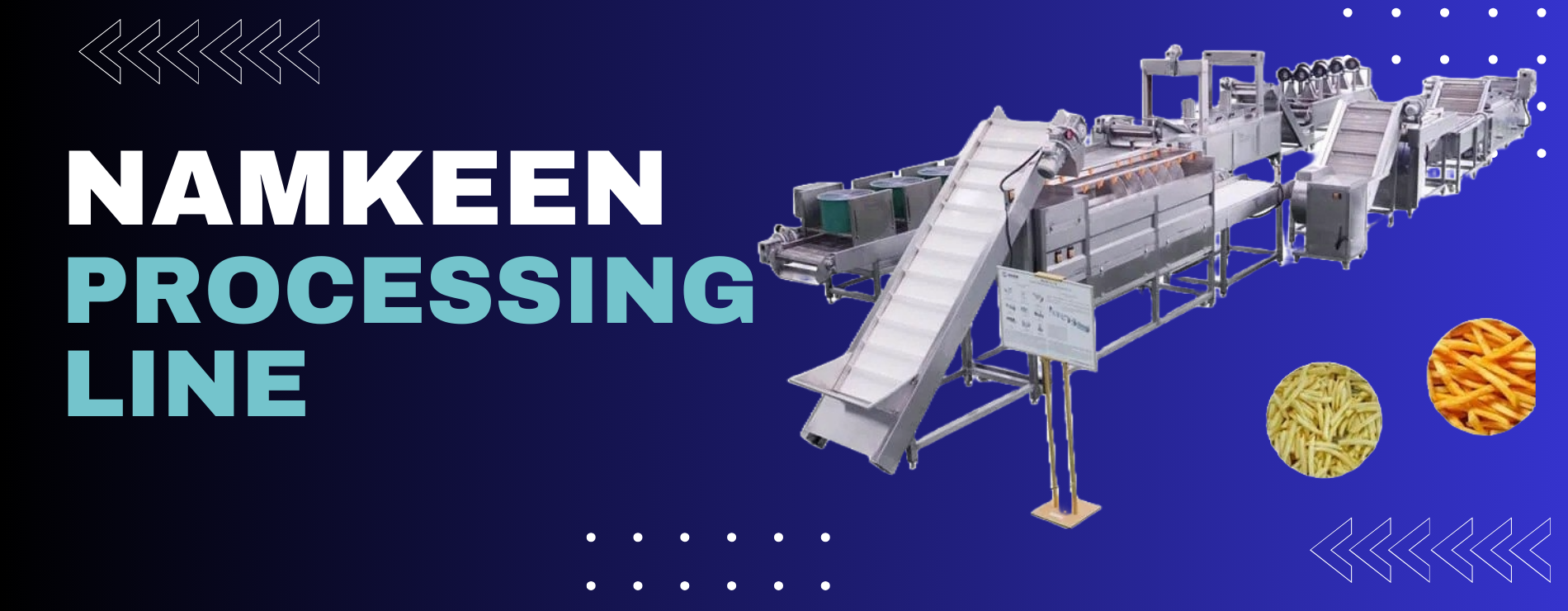Namkeem Processing Line

Introduction
Namkeen, a beloved category of Indian snacks, is a testament to the diverse and rich culinary traditions of the country. From spicy sev to crunchy murmura, namkeen offers a wide variety of textures and flavors that delight taste buds. But have you ever wondered about the intricate process that brings these snacks to life? In this blog, we'll take a deep dive into the world of a namkeen processing line, revealing the craftsmanship, innovation, and dedication that go into crafting these irresistible Indian snacks.
The Essence of Namkeen Processing
- Seasoning and flavoring systems are integral to the food industry, responsible for enhancing the taste and aroma of a wide range of products. These systems combine precision with culinary artistry to deliver consistent and delicious flavors to food items.
Key Stages in a Namkeen Processing Line
- To understand the art of crafting namkeen, it's essential to grasp the key stages in the processing line.
- The process begins with selecting high-quality ingredients such as grains, lentils, and spices. These are cleaned, roasted, and sometimes ground to prepare them for the next steps. .
- The prepared ingredients are mixed in specific proportions to create the base mixture for different namkeen varieties. The mixture may be spiced and seasoned at this stage.
- g: The mixture is then shaped and cut into the desired forms. This can range from thin sev to chunky farsan or intricate patterns like chakli.
- Depending on the namkeen variety, the shaped snacks are either deep-fried in hot oil or roasted to achieve the perfect texture and crunch.
- After frying or roasting, namkeen is typically seasoned with a blend of spices, herbs, and flavorings to create the final taste.
- Quality checks are conducted throughout the process to maintain consistency, taste, and safety.
Innovations in Namkeen Processing
- The world of namkeen processing has seen innovations that enhance efficiency and product quality
- Modern machines are used for mixing, shaping, and cutting namkeen, ensuring precision and consistency.
- Advanced frying and roasting equipment maintains the perfect temperature and oil quality for consistent results. Cutting-edge seasoning and flavoring systems provide precise and uniform flavor application.
- Modern packaging machinery ensures that namkeen remains fresh and crispy until it reaches consumers.
- Salad dressings, barbecue sauces, and condiments rely on these systems to achieve the perfect balance of flavors.
Product Variety and Packaging
- Namkeen processing lines offer an extensive range of snacks, each with its unique taste and texture. These include
- Thin, crispy, and typically spicy, bhujia is one of the most popular namkeen varieties.
- Sev comes in various shapes and sizes and can be seasoned with different flavors, including spicy and tangy options.
- Chivda varieties can include flattened rice, peanuts, and a variety of spices and seasonings.
- A category that includes a wide array of snacks, from crispy chakli to savory ganthiya
- Namkeen is typically packaged in airtight containers or pouches to maintain freshness and crunchiness.
Conclusion
A namkeen processing line is where tradition meets innovation, and a wide variety of snacks are crafted to perfection. These snacks are not just a part of Indian cuisine but also a source of pride and delight for millions.
The next time you savor a handful of spicy sev or munch on a mix of chivda, take a moment to appreciate the art and dedication that go into crafting each piece of namkeen in a namkeen processing line. It's a testament to the culinary heritage of India and the expertise that brings joy to snack lovers nationwide.
